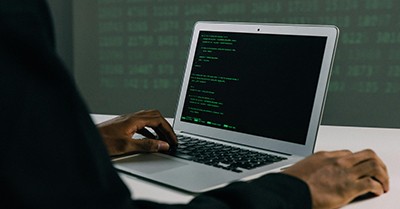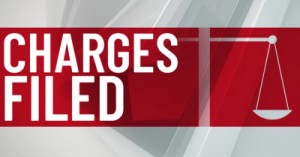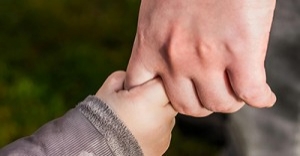As CCTV becomes a more common feature in Australian early learning centres, especially in response to safeguarding concerns, a critical question emerges: Are these systems truly protecting children—or exposing them to new risks?
While surveillance is often introduced with safety in mind, poorly secured CCTV systems can become gateways for cyberattacks, privacy breaches, and even emotional harm.
The Reality of CCTV Vulnerabilities
Recent reports reveal that over 40,000 internet-connected cameras worldwide are vulnerable to remote hacking due to unsecured protocols like HTTP and RTSP. These include cameras in homes, schools, and childcare centres—many of which stream live footage openly via IP addresses.
In Australia, Castle Security confirms that CCTV cameras are hackable if not properly secured, especially wireless models that transmit data over Wi-Fi. Common vulnerabilities include:
- Default or weak passwords
- Outdated firmware
- Unencrypted data transmission
- Poor network security
Once compromised, hackers can:
- Access live feeds
- Steal stored footage
- Monitor staff and children
- Launch further attacks on connected systems
Case Study: Breaches in Childcare Surveillance
In 2021, hackers infiltrated thousands of cameras across Australia, including those in childcare centres. The breach exposed sensitive footage and highlighted how DIY installations and unsecured networks can turn protective tools into privacy threats.
Even high-end systems aren’t immune. Vulnerabilities like CVE-2020-6852 allowed attackers to gain root access to cameras without a password. In some cases, cameras logged and transmitted Wi-Fi credentials to external servers, raising serious concerns about data security.
What’s at Stake for Children?
For children, the risks go beyond data. Surveillance in sensitive areas—like nappy change stations or sleep rooms—can violate their right to privacy and dignity, as outlined in Regulation 155 of the Education and Care Services National Regulations.
If hacked, footage from these spaces could be leaked, misused, or weaponised. This not only breaches legal standards but can cause emotional trauma and erode trust between families and educators.
Best Practice for Early Learning Centres
To protect children and educators, services must adopt robust cybersecurity protocols:
|
Action |
Description |
|---|---|
|
Change default passwords |
Use strong, unique credentials for each device |
|
Update firmware regularly |
Patch known vulnerabilities and install security updates |
|
Disable remote access |
Unless essential, restrict external connections |
|
Encrypt data streams |
Use SSL/TLS and WPA2-AES protocols |
|
Limit camera placement |
Never install CCTV in toileting, nappy change, or sleep areas |
|
Draft clear policies |
Outline access rights, breach protocols, and family consent procedures |
Leading with Transparency
Childcare leaders must communicate openly with families and staff about:
- Why CCTV is used
- Where cameras are placed
- How footage is stored and protected
- What happens in case of a breach
Empowering educators through trauma-informed training and ethical surveillance policies ensures that safety doesn’t come at the cost of dignity.
Further Reading
CCTV Cameras To Be Installed In Early Childhood Services
“Kindy Cops” and Cameras
G8 Education to Roll Out CCTV
Affinity Follows G8 Footsteps With CCTV Cameras
References:
Exposed Eyes: 40,000 Security Cameras Vulnerable To Remote Hacking
Can CCTV Cameras Be Hacked?
Exploiting Network Security Cameras: Understanding and Mitigating the Risks







 As an Educator in Australia, your pay rate falls under the Children’s Services Award 2010. This award states the minimum amount that an employer can
As an Educator in Australia, your pay rate falls under the Children’s Services Award 2010. This award states the minimum amount that an employer can When working as a qualified Early Childhood Teacher (with a university degree) within a service, your rate of pay will come from the Educational Services
When working as a qualified Early Childhood Teacher (with a university degree) within a service, your rate of pay will come from the Educational Services When working as a Diploma Qualified Educator your pay rate is from the Children's Services Award 2010. This Award states your minimum rate of pay
When working as a Diploma Qualified Educator your pay rate is from the Children's Services Award 2010. This Award states your minimum rate of pay When working as a Cert 3 Qualified Educator, your pay rate is from the Children's Services Award 2010. This Award states your minimum rate of
When working as a Cert 3 Qualified Educator, your pay rate is from the Children's Services Award 2010. This Award states your minimum rate of Educational Leaders play a crucial role in their early childhood service by ensuring that the educational program aligns with best practices and supports the holistic
Educational Leaders play a crucial role in their early childhood service by ensuring that the educational program aligns with best practices and supports the holistic In early childhood education and care, ratios are more than a technicality—they are a frontline safeguard. Every child deserves responsive supervision, emotional connection, and developmental
In early childhood education and care, ratios are more than a technicality—they are a frontline safeguard. Every child deserves responsive supervision, emotional connection, and developmental With the new national child safety reforms kicking in on 1 September 2025, early childhood services like yours have a real opportunity to lead the
With the new national child safety reforms kicking in on 1 September 2025, early childhood services like yours have a real opportunity to lead the Here’s a comprehensive Mobile Phone and Smart Watch Policy tailored for early childhood education and care (ECEC) services in Australia, aligned with the latest 2025
Here’s a comprehensive Mobile Phone and Smart Watch Policy tailored for early childhood education and care (ECEC) services in Australia, aligned with the latest 2025 The Sea of Fish Challenge is a national initiative that invites children, educators, families, and communities to create and display fish artworks as a symbol
The Sea of Fish Challenge is a national initiative that invites children, educators, families, and communities to create and display fish artworks as a symbol Across the early childhood education and care sector, educators are sounding the alarm: current staffing ratios are insufficient to deliver safe, meaningful, and developmentally appropriate
Across the early childhood education and care sector, educators are sounding the alarm: current staffing ratios are insufficient to deliver safe, meaningful, and developmentally appropriate


